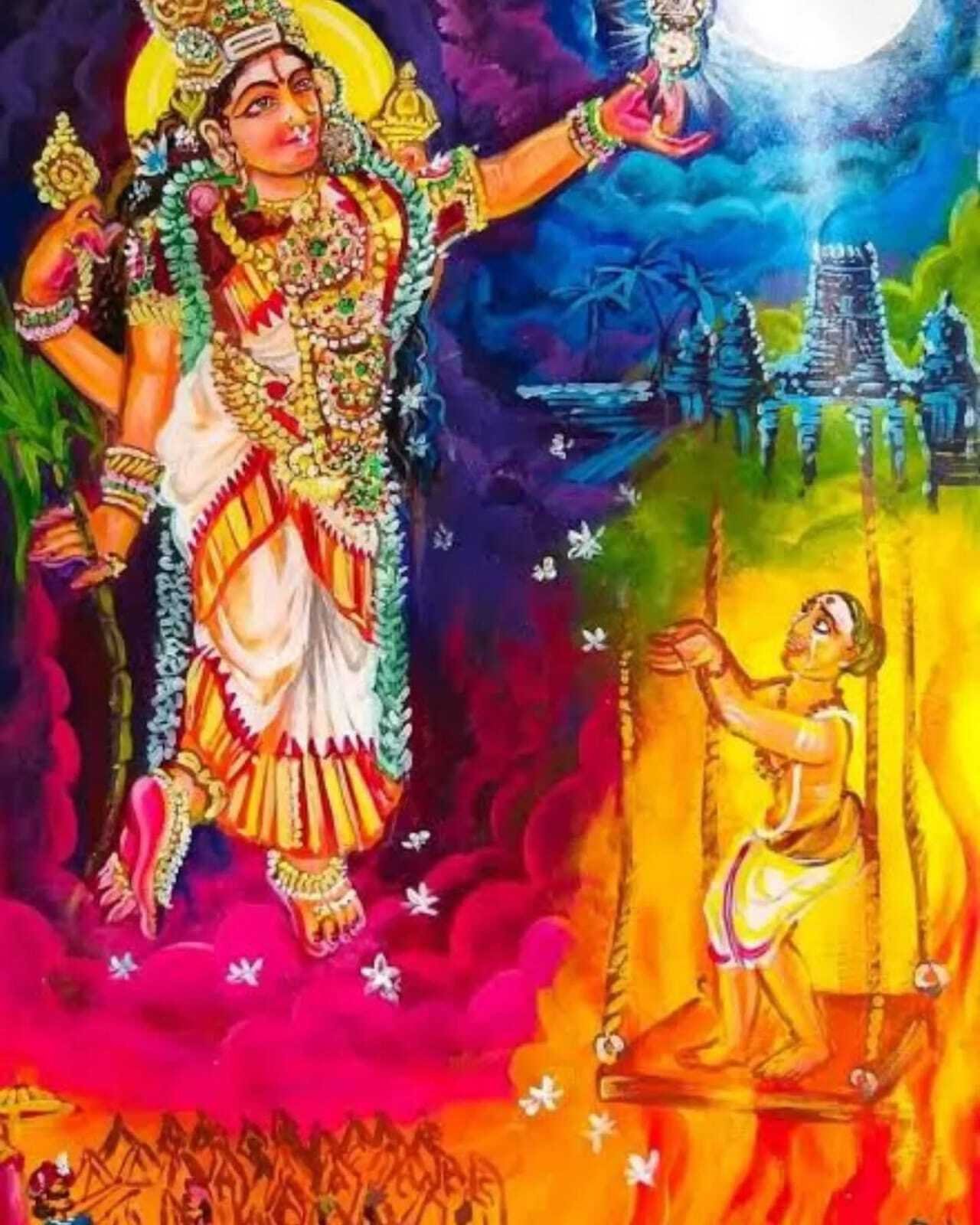When New Moons Become Full Moons: A Story Across Cultures
Lunar calendars have a way of aligning histories, myths, and traditions in unexpected ways. This Chinese New Year (Year of snake) in Singapore coincides with Thai Ammavasai, an important day in India when Goddess Abirami performed a divine miracle—turning a New Moon into a Full Moon, all because of a devotee’s unwavering faith. If you haven’t heard the story before, here’s the short version:
Goddess Abirami tossed her earrings into the sky, illuminating it like a Full Moon.
Abhirami Bhattar, a deeply devoted poet, mistakenly told the king that it was a Full Moon day when, in fact, it was a New Moon (Ammavasai). The furious king sentenced him to death unless the moon appeared in the sky by nightfall. Unshaken, Bhattar continued singing praises of the goddess, and in an act of divine grace, Goddess Abirami tossed her earrings into the sky, illuminating it like a Full Moon.
Now, here’s an interesting observation: Chinese New Year is celebrated on a New Moon — Not just any New Moon, but one that has the celestial power to shine like a Full Moon? Perhaps, hidden within different cultures, are stories that connect deeper than we realize.
Loy Krathong festival at Sukothai Historical Park
This isn’t the first time cultural festivals share cosmic calendars. Loy Krathong, Thailand’s stunning festival of lights, where people float beautifully decorated baskets (krathongs) on rivers, coincides with Karthigai Deepam in the Indian lunar calendar—a festival that celebrates the birth of divine light. Both involve releasing light sources into the world, either floating in water or as grand flames on hilltops.
It seems human civilization has always interpreted celestial movements in deeply personal ways.
The Illusion of Light: From Krishna to AI Hallucinations
Speaking of light and illusions, this idea took me down a fascinating path—one that led from ancient mythology to modern GenAI platforms. In the Mahabharata, there’s a famous story where Lord Krishna creates the illusion of sunset to trick Jayadratha’s army into lowering their guard. The moment they think the day is over, Arjuna takes his revenge and defeats Jayadratha.
This idea of creating an artificial truth is oddly similar to my recent experience with AI models. I was testing how well GenAI platforms could recall and piece together mythological narratives, so I asked both ChatGPT and DeepSeek about Jayadratha's story.
This idea of creating an artificial truth is oddly similar to my recent experience with AI models. I was testing how well GenAI platforms could recall and piece together mythological narratives, so I asked both ChatGPT and DeepSeek about Jayadratha's story.
ChatGPT nailed it, recognizing the characters, their roles, and the illusion Krishna created.
DeepSeek? It completely hallucinated. It changed the context and confidently gave me a version of events that had no basis in any known text. Here is a snippet of it
Krishna, ever the playful and compassionate one, noticed their wistful gazes toward the horizon. With a mischievous smile, he twirled his divine Sudarshana Chakra, the celestial discus that held the power of creation and destruction. The chakra glowed with a radiant light, spinning faster and faster until it seemed to merge with the very fabric of the sky.
As the chakra spun, Krishna infused it with his divine energy, and the heavens began to transform. The sun, which had begun its descent, paused mid-journey, as if enchanted by Krishna’s will. The clouds, painted in hues of crimson, gold, and lavender, swirled like dancers in a celestial ballet. The chakra’s light scattered across the horizon, blending the colors of twilight into a masterpiece that no mortal artist could ever replicate.
The gopis and gopas gasped in awe as the sky became a canvas of Krishna’s love. The sun, now a glowing orb of amber, seemed to hover just above the horizon, casting a warm, golden glow over Vrindavan. The Yamuna’s waters mirrored the spectacle, shimmering like molten gold. The peacocks in the groves spread their feathers in delight, and the cows lowed softly, as if in reverence to the divine artistry unfolding before them.
It was an eerie realization—AI, like Krishna, can conjure illusions. The key is knowing which illusions to trust and which ones to challenge.
GenAI: A New Kind of Light for Learning
And that’s the real magic of using GenAI for learning. It’s like having an interactive mythology teacher, a cosmic historian, and a cultural connector all in one place. But, like ancient devotees or wise warriors, we must approach it with curiosity, discernment, and a willingness to challenge what it tells us.
So, whether it’s the New Moon that became a Full Moon, the light that connects Thai and Indian traditions, or the illusions created by both Krishna and AI, one thing is clear—there is always more to explore when you connect the dots.
And who knows? Maybe, with enough curiosity and the right questions, we might find even more hidden links between our cultures, myths, and modern technology.
More on how GenAI can be used in your learning, check out the Coursera course Accelerate your learning with ChatGPT!
Happy Learning by connecting the dots!


